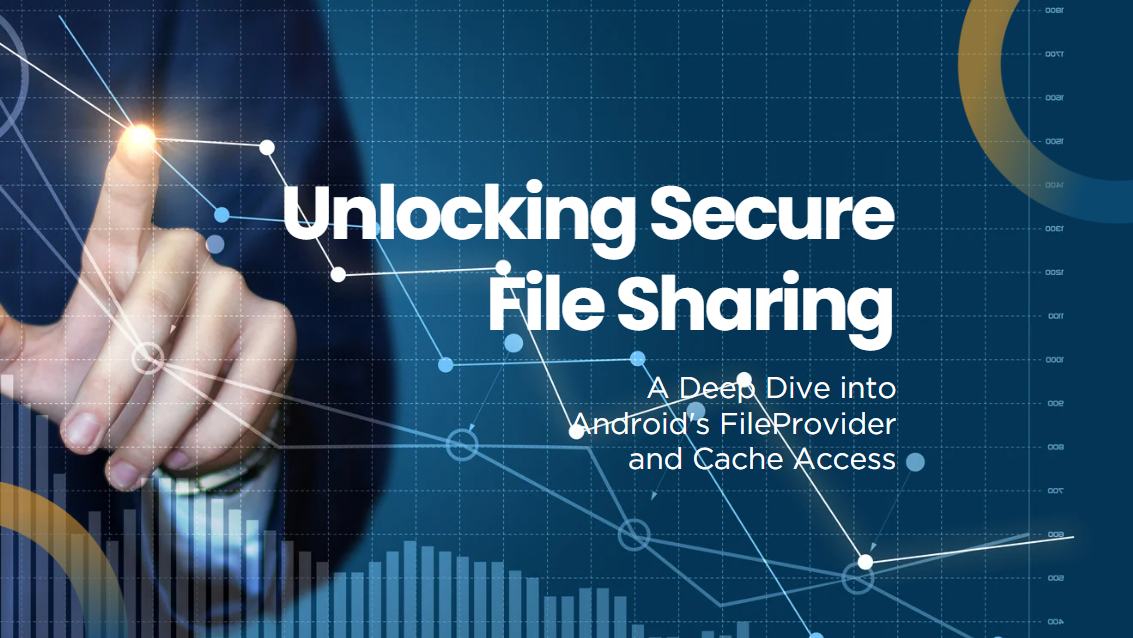Android apps constantly juggle file access—sharing documents, caching images, or storing user data. But how do they do this without compromising security? Enter FileProvider, Android’s guardian of file privacy. Let’s explore how it transforms raw file paths into secure gateways, especially for sensitive cached files.
Why File Paths Are a Security Nightmare
Imagine handing a stranger your home address instead of just inviting them into your living room. Traditional file paths (/data/user/0/app/files/secret.jpg) expose internal app structures, risking unauthorized access. Android’s solution? Content URIs (content://com.example.app/file.jpg). These URIs:
-
Hide actual file locations.
-
Grant temporary, permission-based access.
-
Are managed by
ContentProvider, a core Android security component.
Example: An app like AppBlock shares a cached
blank.htmlfile via a URI likecontent://com.mobilesoft.appblock.fileprovider/cache/blank.html. Other apps see only this masked path—never the raw storage location.
FileProvider: Your File Security Bodyguard
FileProvider (a subclass of ContentProvider) acts as a secure bridge between your app’s files and external requests. Here’s how it works:
-
Declare FileProvider in
AndroidManifest.xml:<provider android:name="androidx.core.content.FileProvider" android:authorities="com.your.app.fileprovider" android:exported="false" android:grantUriPermissions="true"> <meta-data android:name="android.support.FILE_PROVIDER_PATHS" android:resource="@xml/file_paths" /> </provider>
-
Define accessible paths in
res/xml/file_paths.xml:<paths> <cache-path name="cached_files" path="." /> </paths>
-
Generate a secure URI when sharing:
File file = new File(getCacheDir(), "blank.html"); Uri uri = FileProvider.getUriForFile(context, AUTHORITY, file);
This URI grants temporary read/write access via an Intent, ensuring other apps access only this file—nothing else.
TRENDING: Garage2Global: Crafting a Global Digital Footprint That Converts
The Role of Cached Files: Speed Without Sacrifice
Apps like AppBlock use cache directories (/data/data/app/cache) for:
-
Temporary resources: Placeholder HTML files (e.g.,
blank.htmlfor blocking web content). -
Performance: Faster loading for frequently used assets.
-
Privacy: Files here are app-private by default.
But caution is key:
<external-cache-path name="cache" path="/" /> // Safer: Restrict to subdirectory <cache-path name="html_cache" path="html/" />
Navigating Scoped Storage & Permissions
Since Android 10’s Scoped Storage, direct file path access is restricted. FileProvider becomes essential for:
-
Sharing cached files: Use
Intent.FLAG_GRANT_READ_URI_PERMISSIONto grant temporary access. -
Receiving files: Clients use
ContentResolverto open streams via the URI. -
Avoiding errors: Missing files throw
FileNotFoundException—always validate file existence first!
Critical Best Practices
-
Limit exposed paths: Only share specific directories (e.g.,
cache/orimages/). -
Validate incoming requests: Ensure URIs match your defined paths.
-
Clean cache regularly: Temporary files shouldn’t become permanent security risks.
-
Handle errors gracefully:
try (InputStream stream = resolver.openInputStream(uri)) { // Use file } catch (FileNotFoundException e) { Log.e("FileProvider", "File missing: " + uri); // Fallback to default content }
Real-World Use Case: Privacy Apps
Consider AppBlock’s blank.html:
-
Purpose: A placeholder to block/redirect web traffic.
-
Security: Stored in private cache → exposed via FileProvider → accessible only to authorized components.
-
Benefit: No sensitive paths leaked; no permanent permissions granted.
Conclusion: Security Through Obscurity Isn’t Enough
FileProvider isn’t just a “nice-to-have”—it’s foundational for modern Android privacy. By converting file paths into scoped, temporary URIs, it ensures apps like password managers, firewalls, or parental controls operate safely. As scoped storage evolves, mastering FileProvider isn’t optional; it’s essential for any developer handling files.
Pro Tip: Test your implementation rigorously. Use adb shell content query --uri [URI] to verify exposed paths match expectations—and nothing more.
By embracing these principles, you’ll build apps that are both powerful and trustworthy, keeping user data locked down without sacrificing functionality.

